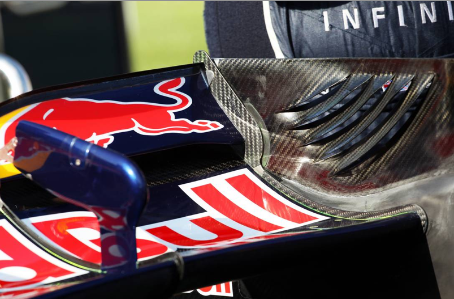
via Imago
RB8’s Double DRS.

via Imago
RB8’s Double DRS.
In another slew of changes this season, the FIA has altered a few of its F1 procedures. Now, they will no longer globally disable DRS across all cars in yellow flag situations. This will apply in practice, qualifying and grands prix.
Up until now, at each event, race director Charlie Whiting explained that yellows at particular places on the track will automatically cut DRS. This is done to slow speeds while incidents are cleared.
For example, in Canada, Whiting’s original notes read: “DRS will be globally disabled if panels 1, 7, 8, 9, 12, 13, 14 or 15 are displaying yellow,” and “detection will be automatically disabled if the light panels below are displaying yellow: zone 1: panels 5 or 6. Zones 2 and 3: panels 10 or 11.”

via Imago
The DRS in operation
But, there was a certain flaw in the system, namely, a driver could be robbed of DRS at a vital time in a session.
Off late, the FIA have been adding extra DRS zones to boost overtaking. This weekend, three are in use in Montreal. Interestingly, the F1 teams have requested the FIA to disable DRS only in zones directly affected by yellows, instead of the whole track.
While on one hand, this is technically possible, on the other end of the scale, modifying the software would be very complex.
In light of that revelation, the FIA has instead opted to leave DRS in operation under yellows.
During Thursday’s team managers’ meeting, Whiting made it explicitly clear that drivers are still obliged to slow sufficiently for yellows and the onus is on them to comply.
This ruling will be in effect from Canada onwards for the remainder of the season and beyond.
As Whiting explained, it is the driver’s responsibility to slow down and obey the caution flags. Because God forbid if we have another Bianchi-like situation. But then again, the drivers are all wise enough to keep themselves out of danger.

